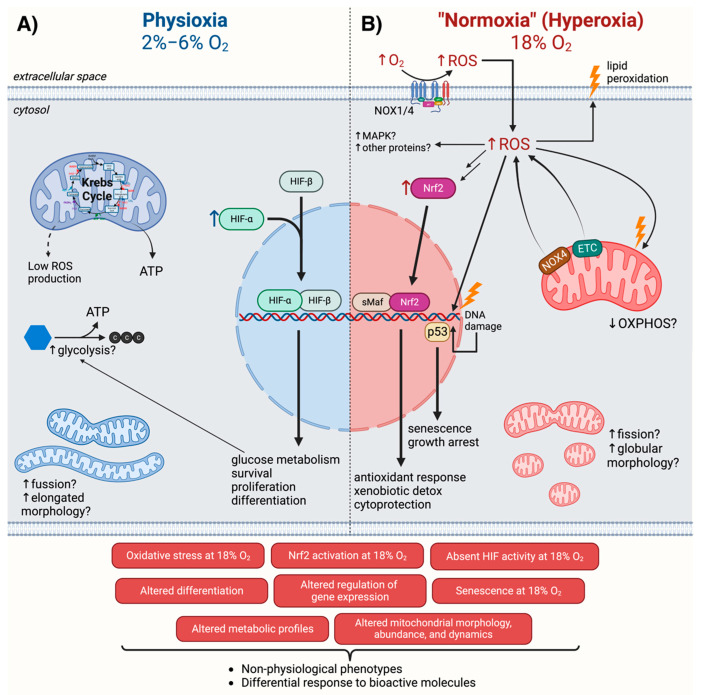Figure 2.
Cellular mechanisms differentially regulated at physioxia (2–6% O2) versus normoxia (18% O2). In physioxia (A), activation of HIF may drive the induction of genes that regulate glucose metabolism, survival, proliferation, differentiation, and other processes. In many cases, mitochondria have a more elongated morphology and form highly fused networks. In normoxia (B), increased ROS production by NADPH oxidases (NOX) and the electron transport chain (ETC) leads to oxidative stress, characterized by DNA and lipid oxidation, and promotes activation of a variety of pathways such as p53 and Nrf2, which, in turn, results in the induction of antioxidant genes and senescence. Further, in many instances, mitochondria show a more globular morphology and increased fission of mitochondrial networks. These cellular mechanisms result in nonphysiological phenotypes and differential responses to bioactive molecules. Created with BioRender.com (accessed on 26 September 2022).

